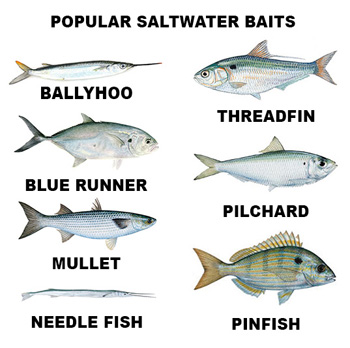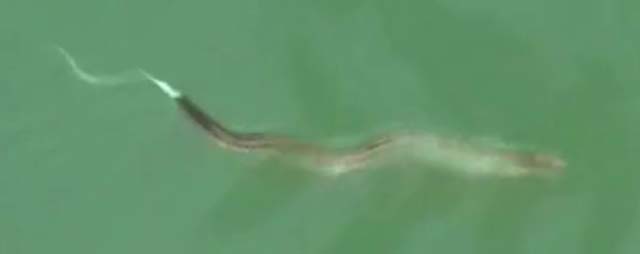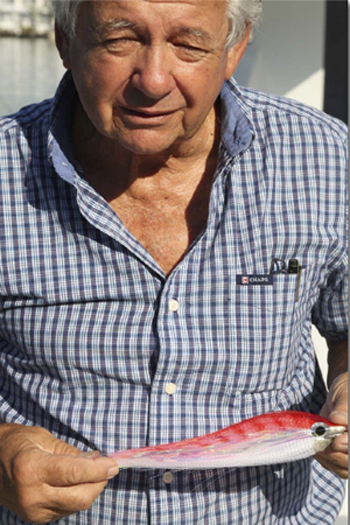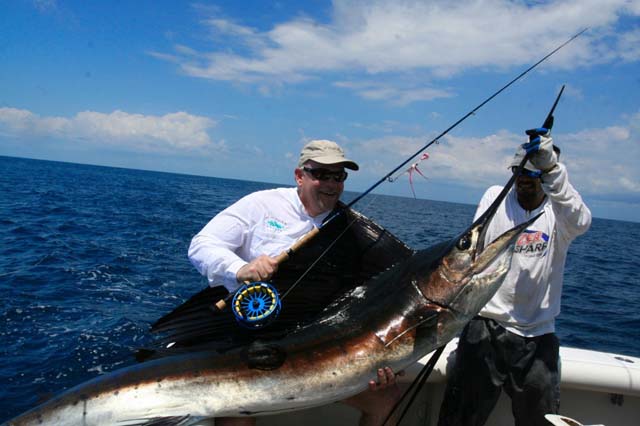Part Two, Saltwater Flies (Part I Freshwater Flies)
By Skip Clement
[dropcap]F[/dropcap]or the best fly selection, ask your guide or offshore captain. The second best idea, fish your home waters for three years, often, then you’ll know what flies to use and when. The third option, your local fly shop owner. Lastly, but not least, a qualified outdoor destination travel agency like Frontiers Travel or Yellow Dog fly Fishing Adventures – assuming you’re crossing time zones, borders or datelines.
But, if you’re stuck being your guide and do not want to be accused of hiring a fool, here are some easy things to learn that might make what seems complicated, understandable.
Baitfish are on every NaCl water menu regardless of the geography

Tyers try to get the shape and colors right, but making a perfect “sculpture” helps little if the movement of the fly in the water and how it swims sucks. Movement and how it’s swum are the “Bitcoin value” of fly patterns.
With freshwater fly choices, there are global constants like midges, worms, crayfish, baitfish and more – in one form or another worldwide. In saltwater, the “Skittles” is also universal constants like worms, shrimps, crabs, and others.
However, saltwater prey patterns offer the fly tyer a great deal more flexibility than freshwater patterns. That’s not heretical – strictly by the numbers call-out.
Worldwide freshwater supplies are dismal compared to briny water volume
The total volume of water on Earth is estimated at 333 million cubic miles, with 97.5% being saltwater only and 2.5% is fresh water. Of the freshwater, only 0.3% is in liquid form on the surface – the rest in clouds, atmosphere, aquifers (most), soil water, etc.).
So, it’s not a stretch to say there many more fish in the oceans than there are fish in lakes, rivers, streams, ponds, and creeks.
Therefore, it shouldn’t be a leap of faith to deduce that there are more prey fish and animals in the oceans to be feasted upon by game fish than counterpart preys found in freshwater environs.
Too, there isn’t “one” gamefish in saltwater that would fall for a #28 midge, ever. However, in freshwater, it’s conceivable that a large brown trout could be duped.
So, armed with the realities as mentioned above, what are the categories of prey that better perform the story of “Saltwater fly patterns without borders?”
Worms are not in the vocabulary, on the tying bench or in the fly box of too many fly fishers of the brine. However, “worms” have been found in the stomachs of several species of gamefish – mostly flats dwellers (personal experiences) and are a credible food source according to ichthyological studies.
Patterns
To begin with, there a zillion patterns; hook choices such as gape shape, hook eye position, barbed and barbless, shank length, wire type, and a rainbow of color choices. A few classics always make the global cut and on “toy” might have a future.
NOTE: There are at least a half-dozen books in my library on fly patterns, and they are bookended by tying books. Except for one, the books on both subjects mentioned are either parochial, regional or species specific. The one that escapes borders is titled 101 Favorite Saltwater Flies by David Klausmeyer (editor-in-chief at Fly Tyer Magazine).
NOTE: There are thousands of flies anyone can “claim” as better, but the patterns or “types” listed do well at both home and away games. When your destination is planned, you’ll always be choosing from the following types of flies. Remember, it’s the fly you choose, where you place it, and how you swim it that creates the bite.
Fast food any time of the day, anywhere flies:
Lefty’s Deceiver
Clouser Minnow – Popper
Gurgler
Wooly Bugger
Looks like baitfish flies – thousands of patterns

Saltwater “bristle” worm ( Platyhelminthes) screenshot YouTube.
Worms, and possibly, a heresy fly. A fly that has worked on largemouth bass and redfish in recent winter months in Georgia and Florida. The bites have been characterized, “. . . with abandonment.” This worm-like fly will be brought to light in a subsequent story. Stay tuned.
Sand eel
Anchovy
Herring
Bunker
Pinfish
Mullet
Squid
Mackerel
Marshes, skinny water, near-shore, flats flies
Shrimp
Crab
Gotcha
Crazy Charlie
Deep pocket players’ offshore billfish flies

Capt. Joe Kononchik, master fly tyer holding a billfish “filet mignon.” Joe’s flies, 6- to 8-inches long, have a lead lip, and they stay in the water – greatly aiding an angler’s chance of a hookup. Joe’s flies are heavy and are more difficult to cast than Cam Sigler’s, but with sails, we’re only talking 30- or 40-feet. The Clement photo
Cam Sigler “style” flies remain the most popular.
. . . With tournament game face on, George Sawley prefers 4/0 X 4/0 hooks with Kononchik tube flies (6” and 8”). Stating: “Although a skilled angler is required to have more finesse when fishing 4/0 X 4/0 hooks, they’ll produce a quicker, deeper hook up than larger 6/0 hooks . . . short shank hooks are better than the long shank.” George went on to comment: “Years ago, I had a chance to fish a friend’s boat who only used Joe Kononchik’s flies. I’d never seen them before, and he wouldn’t tell me where he got them, or who tied them. The flies turned out to be a “Fatal Attraction” for both sailfish and marlins on that trip. I was impressed. I’d known only Cam Sigler’s innovative popper flies and Moldcraft’s lures. George said: “Some months later, my “‘don’t tell’” friend came up short – his boat was at dry dock, and he needed a boat to fish a tournament. I saw my chance and took it. I told him I’d fish him, but he had to reveal where he got the irrefutable flies. A deal was struck, and Joe’s been supplying me with flies ever since and that was a long, long time ago.” George went on to reflect: “I stopped using Cam’s (Sigler) lighter flies because too many times a billfish will blow it away or it’ll get looped around the bill – exposing the class tippet – it’s too light. Billfish, when they open their V-shaped mouth, push a huge amount of water in front of it – easily blowing away light, on top of the water flies. Joe’s flies have a lead lip, and they stay ‘in’ the water – greatly aiding an angler’s chance of a hookup.
Featured Image sailfish on a fly provided courtesy of Casa Vieja Lodge, Ixtapa, Guatemala.



